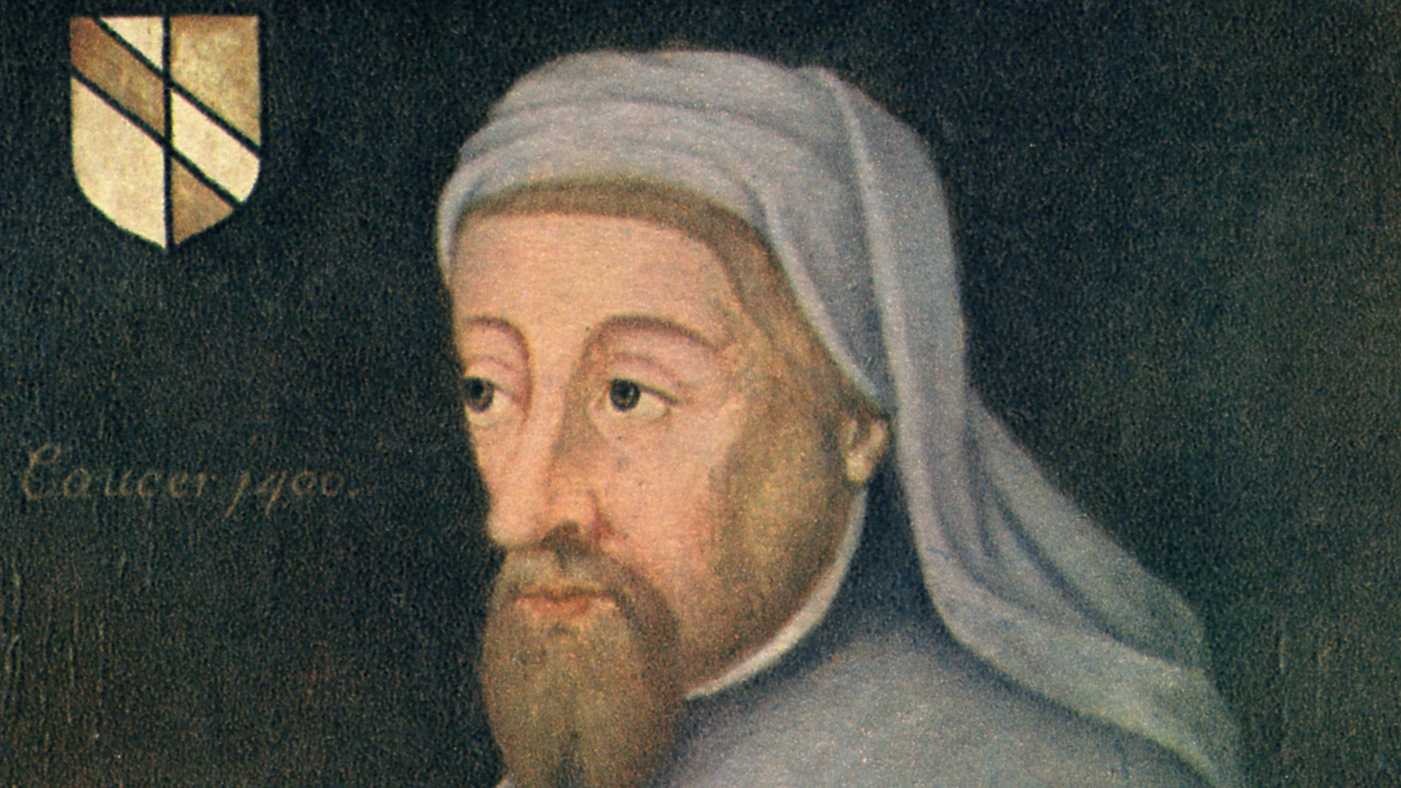'Chaucer Here and Now' at the Bodleian Libraries
The influence of the so-called 'father of English literature' is tracked throughout the centuries in this 'small but special' exhibition

Few figures in our culture are regarded with as much reverence as Geoffrey Chaucer, said Francesca Peacock in The Daily Telegraph. The author of "The Canterbury Tales" is remembered "as a fundamentally English and patriotic author", whose decision to write in his own vernacular firmly established him as "the father of English literature". Yet as this "superb" exhibition at Oxford's Bodleian Libraries attests, Chaucer (c.1340-1400) was an unconventional figure in his own day, who "has not always been on a canonical pedestal". And while we might assume that his original words have been consistently preserved as sacrosanct, they have in fact been endlessly modified to suit "whichever reader had it in their hands at the time". The show brings together "reams" of manuscript history, along with exhibits that testify to more recent responses to Chaucer's work, "from gold-leaf illuminations to 20th century films and Zadie Smith's 2021 play, 'The Wife of Willesden'".
The medieval exhibits here are particularly fascinating, said Susie Goldsbrough in The Times. While the "Hengwrt Chaucer", the earliest surviving copy of his writing, is "warped and almost rotten with age", a copy of his "twisted, tragic love poem" "Troilus and Criseyde" comes complete with a "gloriously bright frontispiece" depicting "a Chaucer-ish figure" clad in "turquoise and raspberry pink". There is even a copy of "The Canterbury Tales" owned by the printer William Caxton, "deliciously edged in strawberries". The exhibition shows how, ever since his death in 1400, people have been "mucking around" with Chaucer's work. The first medieval scribes to copy out "The Canterbury Tales" "were working from a mess of half-finished fragments" – and some of them "took their editorial licence a little far". In one manuscript here, dating from the mid-15th century, a scribe "boldly" adds an entire new adventure to the end of "The Cook's Tale". Another adds "furious rebuttals" into the margins of "The Wife of Bath"'s prologue. All in all, this is a "small but special" show.
The 19th century gave us some particularly egregious reinterpretations of Chaucer, said Donna Ferguson in The Observer. Victorian educators saw his writing as a vehicle for "religious and moral lessons" and thus chose to suppress the "more eye-popping details". In their versions, "no one ever has sex in a tree or accidentally kisses someone else's hairy bottom". A number of these censored retellings are displayed here, including one by Charles Cowden Clarke, who explicitly warned that some stories were "of so coarse and indelicate a character as to be unfit for perusal". The show is curated by Prof Marion Turner, author of a much-praised biography of the poet, who has written a book, "Chaucer Here and Now", to accompany it.
The Week
Escape your echo chamber. Get the facts behind the news, plus analysis from multiple perspectives.

Sign up for The Week's Free Newsletters
From our morning news briefing to a weekly Good News Newsletter, get the best of The Week delivered directly to your inbox.
From our morning news briefing to a weekly Good News Newsletter, get the best of The Week delivered directly to your inbox.
Weston Library, Bodleian Libraries, Oxford (01865-277094, visit.bodleian.ox.ac.uk/). Until 28 April. Free entry.
Sign up to The Week's Arts & Life newsletter for reviews and recommendations.
A free daily email with the biggest news stories of the day – and the best features from TheWeek.com
-
 Into the Woods: a ‘hypnotic’ production
Into the Woods: a ‘hypnotic’ productionThe Week Recommends Jordan Fein’s revival of the much-loved Stephen Sondheim musical is ‘sharp, propulsive and often very funny’
-
 ‘Let 2026 be a year of reckoning’
‘Let 2026 be a year of reckoning’Instant Opinion Opinion, comment and editorials of the day
-
 Why is Iran facing its biggest protests in years?
Why is Iran facing its biggest protests in years?TODAY’S BIG QUESTION Iranians are taking to the streets as a growing movement of civic unrest threatens a fragile stability
-
 Into the Woods: a ‘hypnotic’ production
Into the Woods: a ‘hypnotic’ productionThe Week Recommends Jordan Fein’s revival of the much-loved Stephen Sondheim musical is ‘sharp, propulsive and often very funny’
-
 13 Gen Z workplace terms and phrases
13 Gen Z workplace terms and phrasesin depth From ‘quiet firing’ to ‘resenteeism,’ there are clues about why employers and employees in America are having such a sad time
-
 The best food books of 2025
The best food books of 2025The Week Recommends From mouthwatering recipes to insightful essays, these colourful books will both inspire and entertain
-
 Art that made the news in 2025
Art that made the news in 2025The Explainer From a short-lived Banksy mural to an Egyptian statue dating back three millennia
-
 Nine best TV shows of the year
Nine best TV shows of the yearThe Week Recommends From Adolescence to Amandaland
-
 Winter holidays in the snow and sun
Winter holidays in the snow and sunThe Week Recommends Escape the dark, cold days with the perfect getaway
-
 Let these comedians help you laugh your way through winter
Let these comedians help you laugh your way through winterThe Week Recommends Get some laughs from Nate Bargatze, Josh Johnson and more
-
 The best homes of the year
The best homes of the yearFeature Featuring a former helicopter engine repair workshop in Washington, D.C. and high-rise living in San Francisco